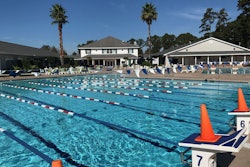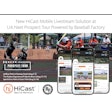
DALLAS, TX – Whether it’s the crack of the bat, the kick or pass of a ball or the swoosh of a field hockey stick, fall sports are fully underway on the youth sport playing field. Young athletes may be pursuing activities they like best, but with too much specialization comes the risk of injury.
To ensure safe sports participation, the National Athletic Trainers’ Association will host Youth Sport Specialization Awareness Week from October 17-21.
“We are committed to educating parents, coaches, athletic directors, school superintendents and others to help reduce risk of injury with the best recommendations and practices in place,” says National Athletic Trainers’ Association President Kathy Dieringer, EdD, LAT, ATC. Having an athletic trainer on the sideline of school teams is one critical element to keeping athletes safe yet only 37% of US public high schools have access to a full-time AT.”
NATA Guidelines
1. Delay specializing in a single sport for as long as possible: Sport specialization is often described as participating and/or training for a single sport year-round. Adolescent and young athletes should strive to participate, or sample, a variety of sports. This recommendation supports general physical fitness, athleticism and reduces injury risk in athletes.
2. One team at a time: Adolescent and young athletes should participate in one organized sport per season. Many adolescent and young athletes participate or train year-round in a single sport, while simultaneously competing in other organized sports. Total volume of organized sport participation per season is an important risk factor for injury.
3. Less than eight months per year: Adolescent and young athletes should not play a single sport more than eight months per year.
4. No more hours/week than age in years: Adolescent and young athletes should not participate in organized sport and/or activity more hours per week than their age (i.e., a 12-year-old athlete should not participate in more than 12 hours per week of organized sport).
5. Two days of rest per week: Adolescent and young athletes should have a minimum of two days off per week from organized training and competition. Athletes should not participate in other organized team sports, competitions and/or training on rest and recovery days.
6. Rest and recovery time from organized sport participation: Adolescent and young athletes should spend time away from organized sport and/or activity at the end of each competitive season. This allows for both physical and mental recovery, promotes health and well-being and minimizes injury risk and burnout/dropout.
National Virtual Media Briefing on Friday, October 21
Throughout the week, NATA will be issuing new research and also hosting a virtual media briefing, Is It Wise to Specialize? What the Pros have to Say about Overuse Injuries and Burnout, on Friday, October 21 from 12:00 noon – 1:00 pm Central Time. A panel of interdisciplinary health care and medical experts, moderated by President Dieringer, will address the latest trends and guidelines specific to youth sport specialization. The public will also be invited to attend on FACEBOOK.
Panelists include:
Neeru Jayanthi, MD, Associate Professor Orthopedics and Family Medicine; Director Emory Sports Medicine Research and Education; Co-director Emory Youth Sports Medicine Program; Director, Emory Tennis Medicine, Emory Sports Medicine Center
Michele LaBotz, MD, FAAP, Board Member, Maine chapter, American Academy of Pediatrics; Assistant Clinical Professor, Department of Pediatrics, Tufts University School of Medicine in Boston; sports medicine physician, InterMed, Portland, Maine
Tamara Valovich McLeod, PhD, ATC, FNATA, Chair, Department of Athletic Training, Professor of Athletic Training, Research Professor in the School of Osteopathic Medicine; John P. Wood, DO, Endowed Chair for Sports Medicine, A.T. Still University (Mesa, Arizona)
If you are a member of the media and would like to participate please register here.
The general public can log onto FACEBOOK and At Your Own Risk, the public facing arm of NATA, that afternoon for full access.
For more information on reducing risk from sport specialization visit www.atyourownrisk.org
Resources
- Youth Sport Specialization Safety Recommendations endorsed by AT Pro Societies
- Overuse Injuries
- Avoiding Baseball Related Injuries
- Shin Splints and Stress Fractures
- Understanding Athlete Burnout and Mental Health
- Video: Youth Sport Specialization Safety Recommendations
- Journal of Athletic Training Special Issue on Youth Sport Specialization
About NATA
National Athletic Trainers’ Association – Health Care for Life & SportAthletic trainers are health care professionals who specialize in the prevention, diagnosis, treatment and rehabilitation of injuries and sport-related illnesses. They prevent and treat chronic musculoskeletal injuries from sports, physical and occupational activity, and provide immediate care for acute injuries. Athletic trainers offer a continuum of care that is unparalleled in health care. The National Athletic Trainers' Association represents and supports 40,000 members of the athletic training profession. Visit nata.org for more information.
About At Your Own Risk:The mission of At Your Own Risk is to educate, provide resources and equip the public to act and advocate for safety in work, life and sport. Developed by NATA in 2016, the At Your Own Risk campaign is a way of showing employers, workers, legislators, school administrators, parents, and student athletes the value of athletic trainers within the health care team. By employing an athletic trainer, you provide a safer approach to work, life, and sport.





























